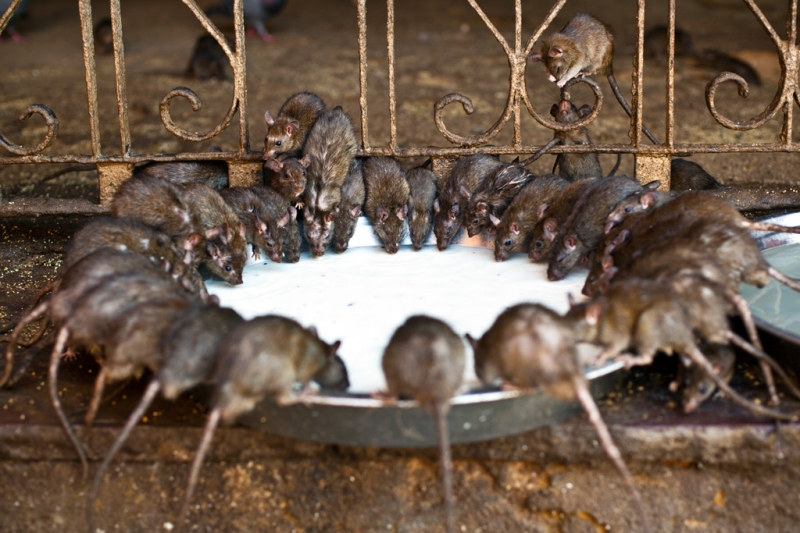
It is known that Eastern religions, Buddhism and Hinduism, are characterized by a respectful attitude towards animals. This is quite logical, because Buddhism teaches us to love all living beings, and followers of Hinduism generally believe that after the death of a person, his soul can be reborn in the body of an animal.
But sometimes the principles of love and respect for all living things, practiced in the East, take on forms that frighten Europeans.
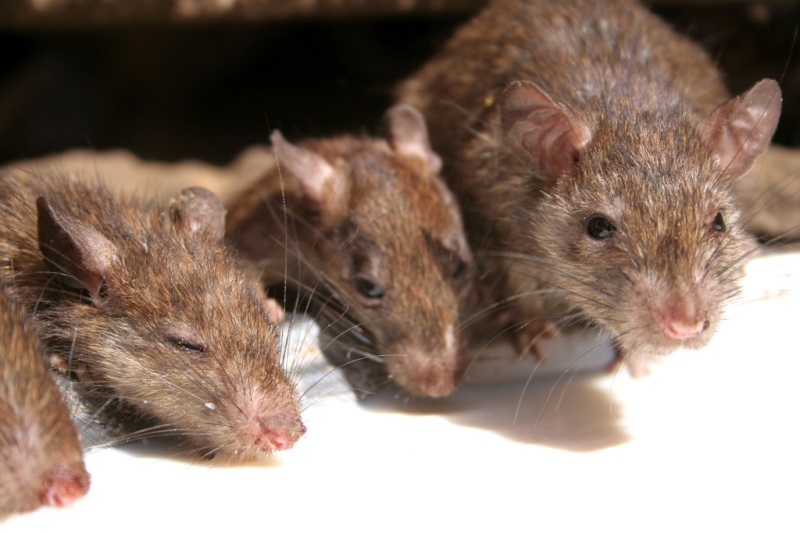
For example, in the Indian city of Deshnok in Rajasthan there is a temple where rats are worshiped. The temple of Saint Karni Mata is home to about 20,000 rats. Temple servants and local residents take care of the animals, clean the premises and chase away birds of prey. Rats feed mainly on sweets and milk, bowls of which are placed all over the floor. The growth of the rodent population in the temple is restrained only by diseases associated with poor nutrition (for example, diabetes) and self-regulation – in crowded conditions, aggression awakens in animals towards their fellow tribesmen.
Karni Mata lived in the 14th century and was widely revered as an incarnation of the goddess Durga during her lifetime. It is believed that she not only knew how to perform miracles and led a righteous life as a saint, but was also an outstanding political figure. But, unfortunately, misfortunes also happen to saints. Once in the city of Deshnok, Karni Mata’s stepson drowned in a pond. The grief-stricken woman begged Yama, the Indian god of death, to resurrect the boy, but he refused. In response to this, the saint declared that from now on none of her relatives would go to Yama after death. Instead, they will temporarily occupy the body of rodents, and in the next cycle of rebirth they will become human again.
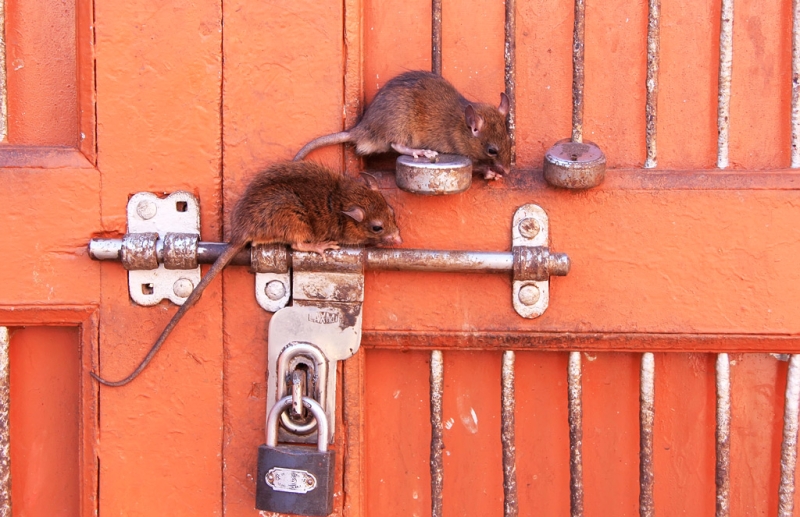
Several hundred families from Deshnok claim to be descendants of Karni Mata, so the rats here receive first-class care. Accidentally killing a rat (the fact that this can be done intentionally here does not even occur to anyone) is considered a serious crime among believers, and in order to atone for such a sin, you need to donate a life-size silver or gold figurine of a rat.
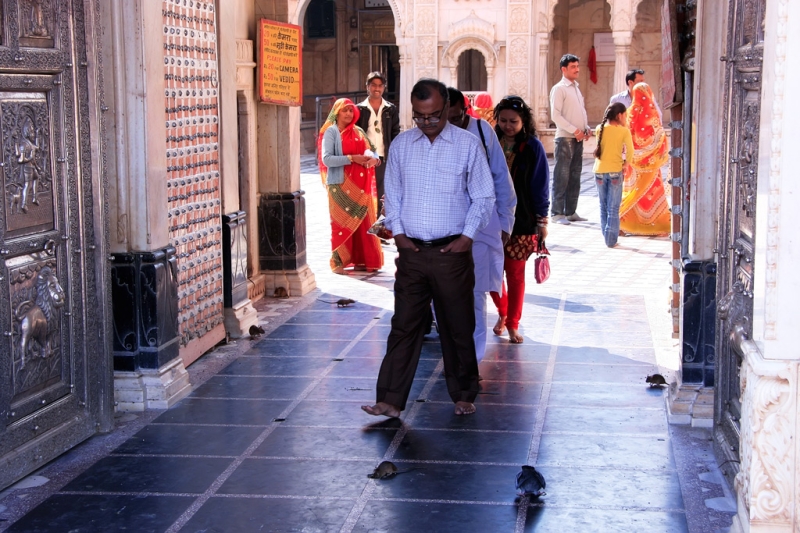
Hundreds of pilgrims and simply curious tourists visit the temple every day. If you decide to join them, keep in mind that you can only enter its territory, like any other Hindu temple, barefoot. And yes, the likelihood of a rat running over your leg is very high.
By the way, it is believed that from a sanitation point of view, visiting this strange attraction is safe. So in Deshnok, since the founding of the temple in the 15th century, there has not been a single plague epidemic.
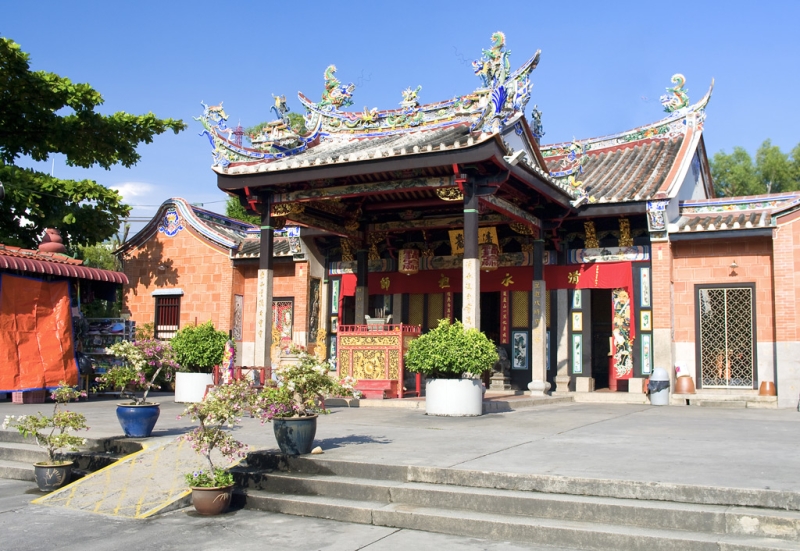
And here is the Temple of Snakes on the Malayan Island
Penang cannot be called safe, because it is really teeming with poisonous snakes. The reptiles feel like masters here and crawl freely everywhere – on the floor, on statues and altars. There are several legends explaining the attachment of snakes to this place. One of them says that the animals themselves crawl into the temple to honor the memory of the monk Chor Soo Kong, in whose honor it was founded by Chinese settlers. It is believed that during his lifetime this monk was the patron saint of snakes. The second version sounds more plausible. The temple was built in 1850, at that time people had just begun to populate the island of Penang, actively cutting down the surrounding jungle. Snakes, whose habitat was destroyed, often crawled into peasant homes, where, of course, they were not welcome and, if possible, they tried to kill them. And only the monks of the temple were friendly to them and gave them shelter.
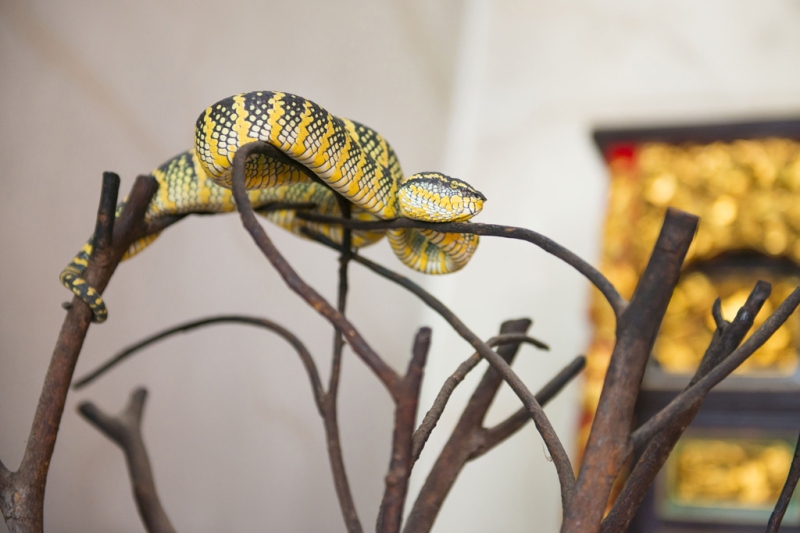
Today, the monks bring the snakes to the temple themselves – this helps maintain its popularity and collect good donations. Snakes are made safe by expressing the venom. But we still recommend looking carefully at your step.
Author: Anastasia Zakharova
Search hotel finders around the world? There are over two million accommodations on OneTwoTrip.

